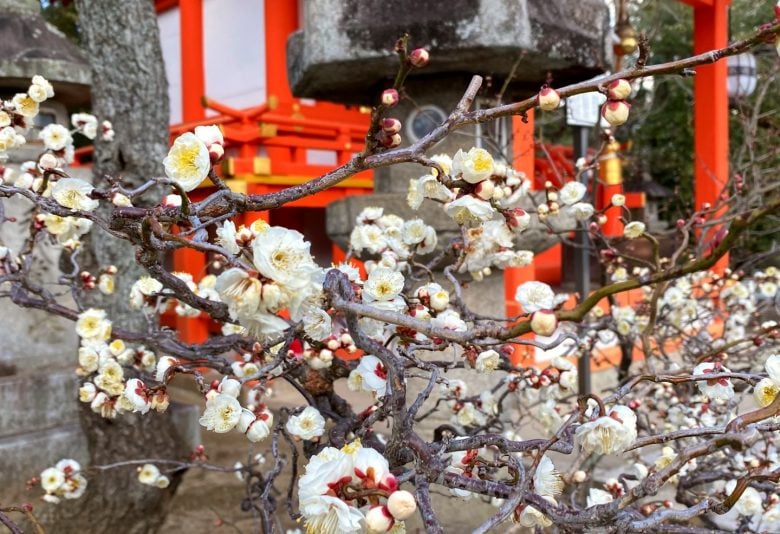
"우메"가 공중에있다
2월 에도 추위가 지속되면서 일부 꽃이 피기 시작합니다. 일본에서 인기 있는 봄 시즌의 지표는 매우 환영합니다. 일본의 학교나 대학으로의 출근, 통학은 자연이 거리와 공원을 장식하므로 더욱 즐거워집니다. 도쿄와 교토의 현지인과 외국인 거주자들은 떠오르는 색을 보기 위해 카메라를 준비하고 있습니다. 그 중 한 그루의 나무가 특별한 관심을 끌고 있습니다. 일본 매화나무 또는 일본어로 "매화"입니다.

매실은 8세기에 중국에서 일본 from 전래된 것으로 여겨집니다. 이 나무의 초기 인기는 액막이의 상징이었기 때문입니다. 이 때문에 많은 가옥, 사원 및 신사에서 정원에 심었습니다. 전통적으로 "악마의 문"으로 알려진 지역에 심었습니다. 이것은 토지 구획의 북동쪽 모서리입니다. 이것은 악이 땅의 음모를 통과하는 방향이라고 믿어집니다.
누군가는 이미 "우메보시" 또는 말린 매실에 익숙할 것입니다. 이름에서 알 수 있듯 매실은 열매를 맺는 나무입니다. "우메보시"를 먹어 본 적이 있다면 그 신맛이 추억을 떠올리게 할 것입니다. 그것은 가장 일반적으로 밥 위에 먹거나 "오니기리" 주먹밥에 먹습니다. 매화 나무가 제공하는 부적 보호에 이어 아침 식사로 "매실 보리"를 먹으면 하루 종일 위험 from 보호된다고 믿어집니다.

액막이의 역할을 하든 아니든 일본인들 사이에서 계속 사랑받는 나무입니다. 향기도 매우 유쾌할 수 있으며 과일의 풍미 from 나무마다 다를 수 있습니다. 하지만 가장 기대되는 부분은 아름다운 꽃입니다.

매화를 구경하고 사진을 찍으러 나가는 것은 이후에 나타날 "벚꽃"을 기대하는 모든 사람들에게 큰 초대입니다.
도쿄와 교토에는 매실을 즐길 수 있는 곳이 많이 있습니다. 그러나 확실히 간과할 수 없는 것은 교토의 기타노텐만구 신사 입니다. 매년 2월에 신사는 방문객들이 이 나무의 향기와 색 사이를 거닐 수 있도록 유명한 정원을 엽니다. 나무가 만개할 것으로 예상되는 월 25일 후반에 "바이카사이"가 열립니다. 매화꽃 축제입니다. 이 날에는 지역 가미시치켄 지역의 마이코 게이샤와 게이코 게이샤 from 방문객에게 녹차와 제철 과자를 제공합니다. 우리가 추천하는 가장 보람있는 경험입니다. 특히 신사 from 도보로 가까운 거리에 있는 SAKURA HOUSE(도쿄 쉐어하우스) KYOTO에 묵는다면 더욱 그렇습니다.
이 아름다운 계절에 도쿄나 교토로 유학, 직장 또는 레크리에이션 여행을 계획하고 있다면 주저하지 말고 저희 팀에 연락하십시오. 단기 또는 장기 체류를 위해 집을 떠나 일본 from의 생활을 즐기십시오.







